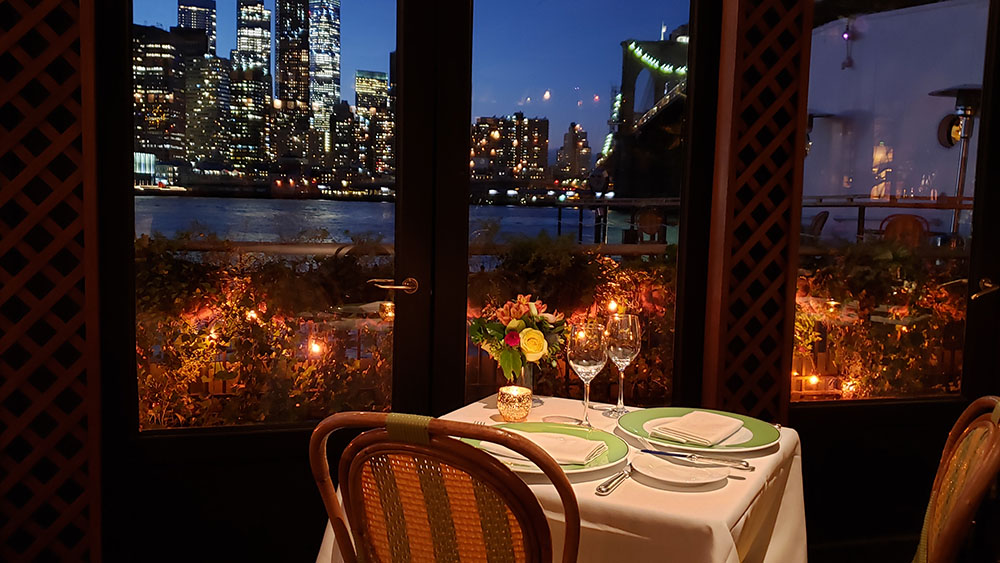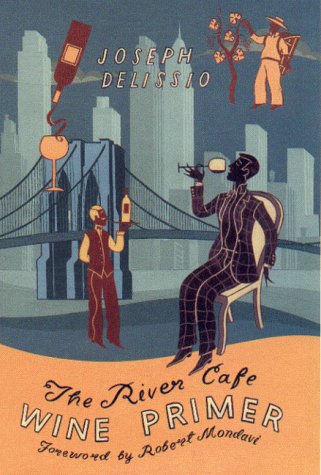Just over a year ago I told you about WINE SIMPLE by Aldo Sohm, the clearest and most enjoyable introduction to wine appreciation that I’ve ever encountered. Now I’ve found a book that takes the subject one step farther and gets you ready for a second semester. Like the Sohm before it, this will make Wine 102 an easy A.
THE RIVER CAFÉ WINE PRIMER was published 22 years ago during Joseph DeLissio’s 43-year career as wine director of the River Café, that elegant spot next to the Brooklyn Bridge that looks back across the river to lower Manhattan. At night the view is especially breathtaking; it’s the shot you would open with in a movie about New York. (If you’re lucky enough to land a table at the window, get used to the peculiar feeling that most of the other diners are looking at you. Their focus is actually elsewhere.) We’ve always used the place for special occasions; our visits are rare and precious.
Mr. DeLissio managed the River Café’s wine program from 1977 until his retirement in the summer of 2020. In that hefty span, he saw the wine world grow and change (when he started, many customers still thought California wine was a joke), and this book is a relic from about halfway through his tenure. But it is not about trends or fickle fashion. The wisdom in the book’s slim but packed 250 pages is as true today as when it was first written down. It is ideal for a reader whose interest in wine has already been piqued and wants to learn more but avoid falling down a rabbit hole of arcane minutiae. The writing is clear and crisp and requires no prior knowledge of its subject.
What makes it sing is the casual way the author imparts knowledge in passing: there’s no “This is a grape. This is a vine.” The information you need comes at the moment you need it, even when Mr. DeLissio guides you to some unfamiliar places, such as a wine auction. (No, you don’t have to be super-rich to find an auction worthwhile, so long as you prepare properly.) The section on dealing with a restaurant wine list — the author’s specialty, after all — is the most comprehensive and helpful guide I’ve read yet. Discussions of a typical year in the vineyard and the ten stages of winemaking after harvest help us understand the science, art, and human effort behind the production of fine wine.
Finally, the second half of the book is devoted to a common-sense overview of selected wine regions worldwide. Here is the spot where some might say the book shows its age. Though an earlier tour through the various grape varietals (with pronunciation guides!) could appear word for word in a current wine book, what has happened since 2000 is an acceleration of the democratization of wine. There is superb wine also being produced in areas where the industry was less developed at the millennium, so there are key spots omitted. But as the author points out, “Each country is steeped in its own winemaking traditions, wines, and history, and each deserves its own chapter. But in writing any entry-level book, one has to observe some limits, and a book on wine is no different. I have simply tried to provide the information I felt was essential for the wine novice.”
This is the rare volume that not only serves as a pleasant informal read but also has great utility as a reference book. I’m putting it right beside WINE SIMPLE on my shelf and plan to take sips from them both for a long time to come.


